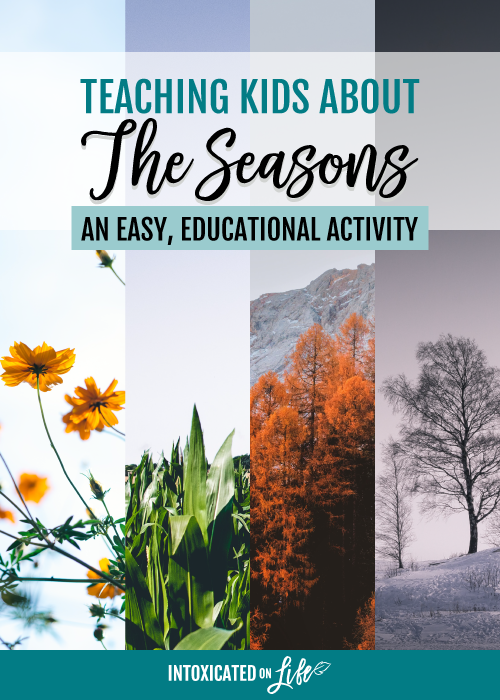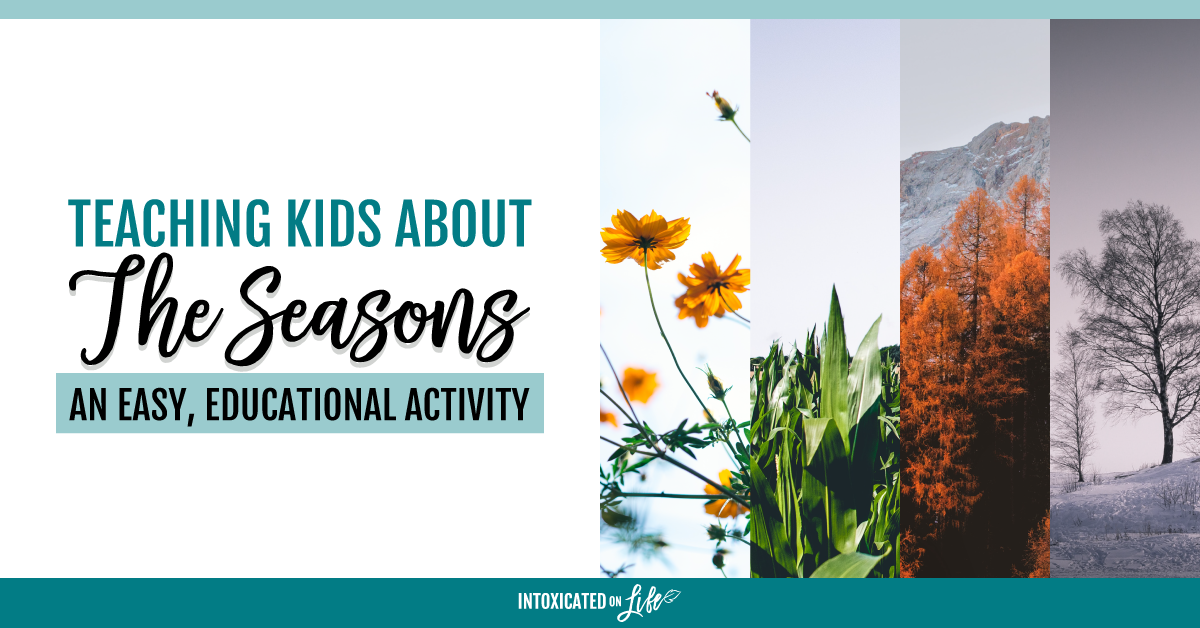There are a lot of ways you can teach kids about the seasons of the year, but often we miss teaching them why there are seasons in the first place. What causes the changes in temperature and different weather patterns we see throughout the cycle of the year?
This activity makes it easy to teach kids the why behind the seasonal changes. (Bear in mind, it takes about a year to complete this activity, but each step only takes you a minute or so to complete.)
The goal of this activity is to show the different places on the horizon the sun rises throughout the course of a year.

Teaching Kids About Seasons Activity Instructions
What you’ll need:
- An east-facing window, preferably with a clear view of the horizon (distant houses or trees are fine)
- A digital camera
How to do it:
- Mark your calendar with dates you will be taking photos of the rising sun. Below are key dates—keep in mind, you don’t have to be perfect.
- February 2 (Groundhog day)
- March 20-21 (Spring Equinox)
- May 1 (May Day)
- June 20-22 (Summer Solstice)
- August 1 (Lammas Day)
- September 22-23 (Autumn Equinox)
- October 31 (Halloween)
- December 21-22 (Winter Solstice)
- Look up the times of day for those dates when the sun will be rising, and make sure to note those times in your schedule. You probably won’t see the sun come up at the exact time of sunrise because you probably have natural landmarks or buildings in the way. But knowing the general time of sunrise will help you know when to gather at the window.
- Gather your kids at the window and pick a spot you will always use for picture-taking—perhaps a certain pane of glass or certain corner of the window.
- On the first planned day, have your kids snap pictures of the rising sun just moments after you first see it. Give everyone a turn doing this.
- It may be helpful to export the photos to a computer where you can keep a file with all the pictures in one place.
- Repeat this same process for every date on your calendar.
- Pick the 8 best photos—one from each date—and open them all for your kids to see. Allow them to see how the location of sunrises changes as the year goes on.
- Watch the video below with your kids to learn how this impacts the seasons you experience throughout the year.
Example:
Below are a few of the photos I took at my house. Compare where the sun is in each picture. You can do this easily by seeing where the sun is compared to the tree line or the house in the distance.
Spring Equinox:

Summer Solstice:

Autumnal Equinox:

Winter Solstice:

Resources for Teaching Kids About Even MORE Astronomy Concepts
- Resources for Teaching Astronomy at Home
- 10 Exciting Astronomy Videos to Use in Your Homeschool
- Easy Science Experiment! The crucifixion, eclipses, and moon phases
Experience Astronomy!
A lot of people like astronomy, but not a lot of parents know how to teach astronomy.
That’s where I come in.
I’ve been teaching homeschool kids astronomy for years through my online Experience Astronomy courses. We teach not just the nuts and bolts behind the seasons but also…
- Finding and labeling constellations on-site—learning to read the sky like a map!
- Memorizing dozens of astronomy facts in a way your kids will never forget
- Knowing the secrets of how our modern calendar was invented—and how the sun, moon, and stars shaped it
- Using the stars as a guide to navigation
- Watching Bible stories (like the parting of the Red Sea, the Flood, and the crucifixion) come to life in a fresh way—all you need to know is a little astronomy ancient people understood
- Taking a visual tour of the planets
Learn more about both our Elementary and Upper Level courses at Experience Astronomy.
Other Resources for Teaching Kids About Seasons
- 10 Ways to Teach Your Kids about the Season from education.com
- About the Seasons from PBS Learning Media
- Four Seasons and Day Length from Generations of Genius
- Seasons Song from Pancake Manor
- Reasons for the Seasons from TED Ed

